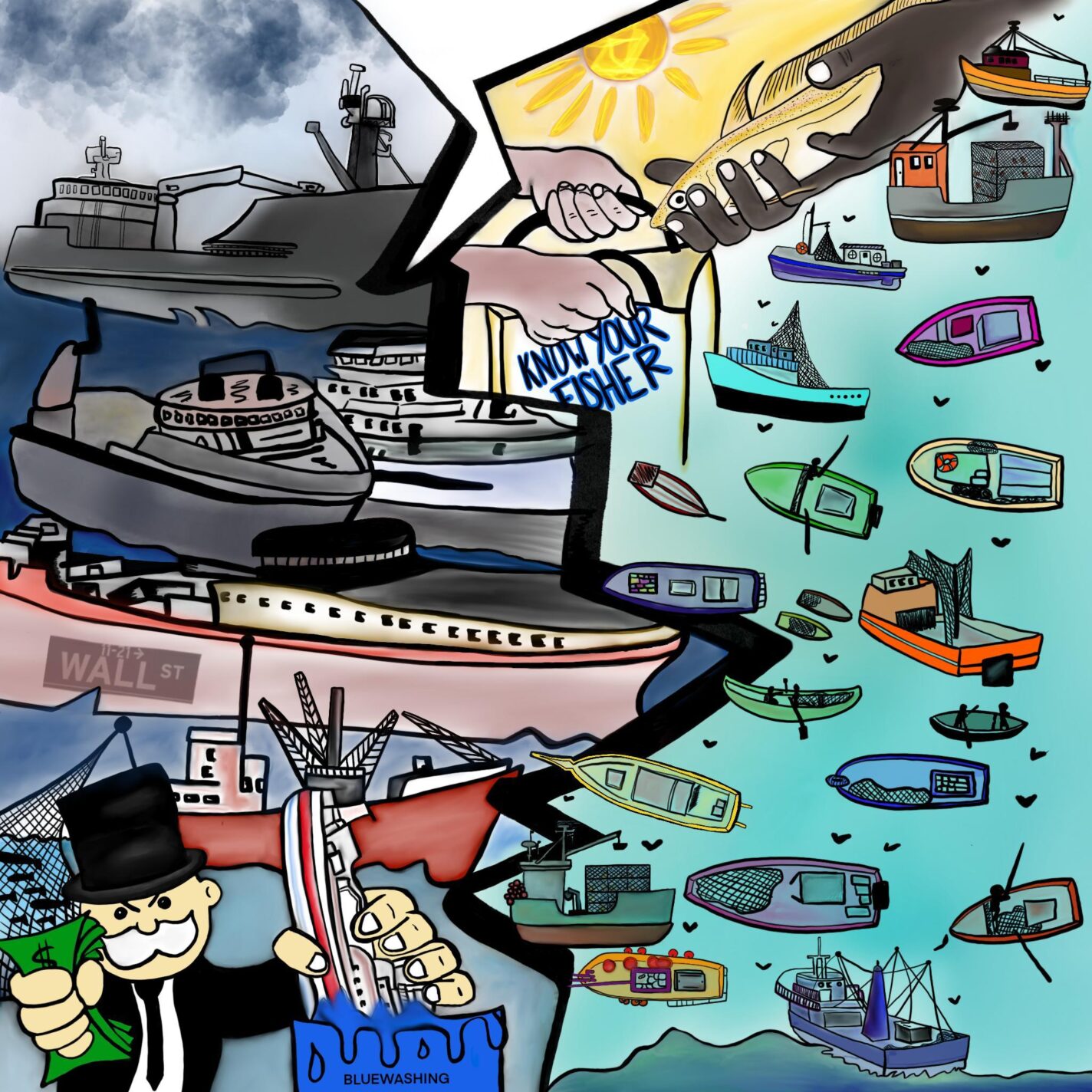Myth: U.S. wild-caught fisheries are fundamentally unsustainable and have no future. That’s why we import so much seafood. To fix our trade deficit and eat more domestic seafood we need more industrial aquaculture and factory fish farms.
That’s a lie.
The U.S. eats about 6 billion pounds of seafood each year. Out of the 6 billion pounds, 80-90% is imported (approximately 5.1 billion pounds). However, the U.S. lands about 7 billion pounds of edible wild-caught seafood each year. This means that we could be feeding ourselves with what we catch nationwide. However, the industry is hell bent on feeding us a false narrative. They want us to believe that the U.S. is not harvesting enogh seafood so they can justify the expansion of indstustrial aquaculture.
Some have been made to believe that small-scale fisheries are responsible for overfishing, but we know better. We know that the common denominator for overfishing is cale. Community-scale (small and medium sized) are inherently better poised to care for the long term health of the fish. Industrial scale (typically controlled by large companies or outside investors) typically places short-term profits over ocean health.
The same principle applies to aquaculture. There are plenty of examples of community based aquaculture like the rice ponds in Asia and ponds in Hawaii, however when big business gets their hand in they produce unhealthy food full of chemicals due to how much they have to produce to make a profit.
Scale Matters!
An example of an industrial wild caught fisherie that’s wreaking havoc in the ocean is the Gulf of Alaska and Bering Sea Industrial Factory Trawler Fleet. They are responsible for 141 million pounds of dead and discarded bycatch every year when fishing for the pollock that goes on your average McDonalds fish sandwich, killing wild salmon, halibut, and crab. That is the equivalent of 71,000 pickup trucks or 255 miles of lined up pick up trucks, the distance from New York to DC. A recent example of this is the sudden decline of 1 billion snow crabs in Alaska due to trawler bycatch and climate change combined.
Another example of indsutrial fisheries contaminating the ocean, using up community resources, and stressing fish populations are fish escapes from factory fish farms. Historically the failure of these famrs and escapes have repeatedly put the curden on Tribes to clean up and deal with the impact.
In 2017, nearly a quarter of a million farmed Atlantic Salmon escaped into the Pacific Ocean from a Cooke Aquaculture factory fish farm. The bufden of addressing this escape fell almost entirely on the Lummi Nation fishermen who captured about 43,000 espcaed fish. Atlantic Salmon is not native to the Pacific Northwest so this escape posed major environmental risks as they can compete with Salmon that are native to the Salish Sea. Recognozing the cultural significance that Salmon have to the Lummi Nation, the escape also posed an existential threat to the tribe’s culture.
An example of a non fishing activity that has impacted the degradation of the ocean is the oil industry. Oil spills have caused mass fish die offs and the contimation can be felt monoths and even years after the original spill. The Gulf of Mexico spill alone in addition to the direct contamination onstie, is believed to have caused the mass death of thousands of fish found belly up floating on the shallow waters of the Louisiana Bayou, miles away from the spill area and 5 months after the spill occurred.
National Geographic also documented how the Gulf oil spill contaminated a vital stretch of feeding habitat for whale sharks, possibly killing some of the world’s largest fish. They say an estimated 4.9 million barrels of oil flowed into an area south of the Mississippi River Delta, where one-thrid of all northern Gulf of Mexico whale shark sightings had occurred in recent years. Today, fishing communities along the Gulf are still suffering the consequences of this spill.
We know today that oil spills in shallow waters cause dead zomes because the fish don’t have a lower area to swim in to avoid the oil floating on top. We also know that oil spiills can wipe out Salmon eggs in a streambed. In the case of Chinook Salmon who spawn only once a year, this would mean wiping out a whole generation of fish. Between fish escapes, deadly factory trawlers, oil spills, and distored information on the so-called trade deficit that only benefits big business… how can we blame small fishing communities and condemn Wild Fisheries to be the issue?

